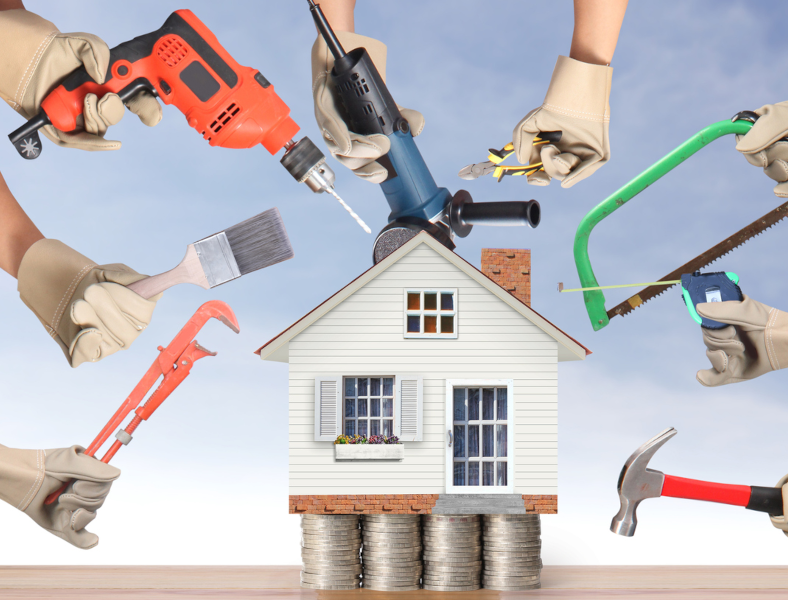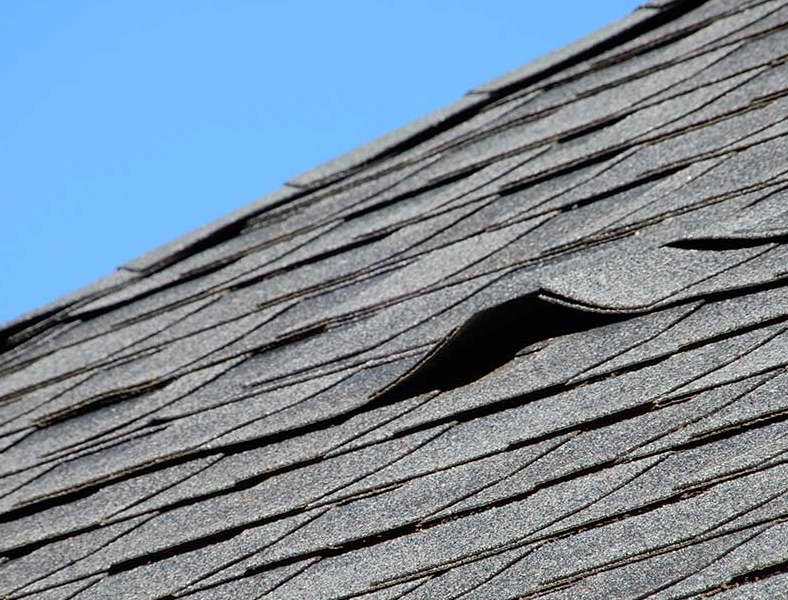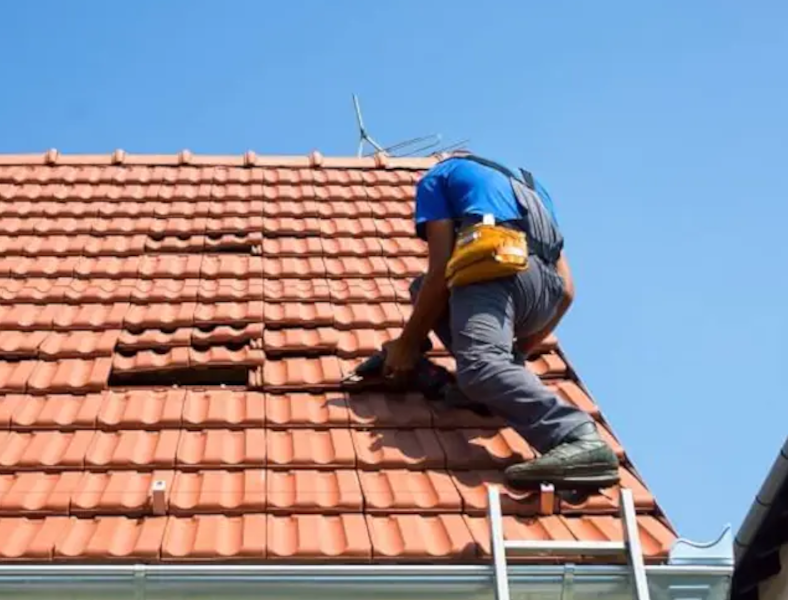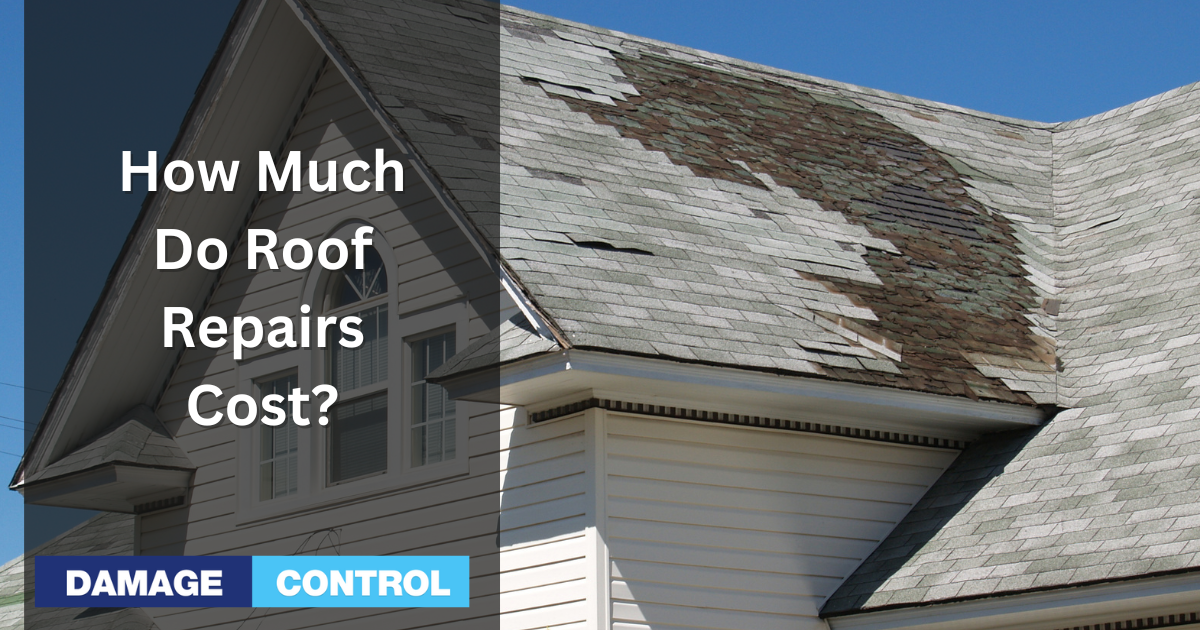Welcome to our comprehensive guide on roof repair costs! We know that as a homeowner, maintaining your roof is essential to protecting your home and family. With so many factors influencing the cost of roof repairs, it can be challenging to know what to expect when it comes to fixing any damage.
In this ultimate guide, we will cover everything you need to know about roof repair costs. From the different types of roofing materials and their associated costs, to common repair issues and how they impact your budget, we've got you covered.
We'll also discuss the factors influencing roof repair costs, including size, complexity, and location, as well as the pros and cons of DIY versus hiring a professional.
So, sit back, relax, and let us help you navigate the world of roof repair costs. By the end of this article, you'll better understand what it takes to maintain your roof and how to make the best decisions for your home and your wallet.
Let's dive in!
Types of Roofing Materials and Their Repair Costs

Asphalt Shingles
Characteristics
Asphalt shingles are the most popular roofing material in the United States. They are lightweight, easy to install, and available in a wide range of colors and styles. Asphalt shingles are typically composed of fiberglass or organic material coated with asphalt and granules for added durability and weather resistance.
National Average Repair Costs
The national average for asphalt shingle roof repair ranges from $250 to $750, depending on the damage's extent and the repair area's size.
Metal Roofing
Characteristics
Metal roofing offers a long-lasting and energy-efficient option for homeowners. Metal roofs are known for their durability, low maintenance, and resistance to severe weather conditions and are available in various materials like steel, aluminum, copper, and zinc.
National Average Repair Costs
Metal roof repairs can vary in cost, with an average range of $300 to $1,200, depending on factors such as the type of metal, extent of damage, and labor rates in your area.
Clay and Concrete Tiles
Characteristics
Clay and concrete tiles are known for their beauty, durability, and longevity. These tiles offer excellent resistance to harsh weather conditions, including extreme heat, wind, and hail. They are also energy efficient and environmentally friendly.
National Average Repair Costs
Repair costs for clay and concrete tile roofs can range from $450 to $1,500, depending on the number of damaged tiles and the complexity of the repair process.
Wood Shingles and Shakes
Characteristics
Wood shingles and shakes offer a rustic and natural look to your home. Typically made from cedar, redwood, or pine, these roofing materials provide excellent insulation and are energy efficient. However, they require regular maintenance and can be susceptible to rot, insects, and fire.
National Average Repair Costs
The average cost for repairing wood shingles and shakes ranges from $350 to $1,200, depending on factors such as the extent of damage and the type of wood used.
Slate Roofing
Characteristics
Slate roofing is known for its elegant appearance and incredible durability. Made from natural stone, slate roofs are fire-resistant, environmentally friendly, and can last for centuries. However, they are heavy and require a strong roof structure to support the weight.
National Average Repair Costs
Slate roof repairs can be expensive due to the material's high cost and specialized labor requirements. The average repair cost ranges from $600 to $3,000, depending on the size of the repair area and labor rates in your area.
Flat Roofs and Membrane Materials
Characteristics
Flat roofs are common for commercial buildings and some residential homes. They utilize membrane materials like EPDM, TPO, or PVC, offering excellent waterproofing and UV resistance. Flat roofs require proper installation and regular maintenance to prevent leaks and other issues.
National Average Repair Costs
The average cost for flat roof repairs ranges from $350 to $1,500, depending on the type of membrane material used, the extent of damage, and labor rates in your area.
Common Roof Repair Issues and Their Costs
Leaks and Water Damage
Leaks are the most common issue homeowners face, and they can lead to costly water damage if not addressed promptly. Causes of leaks can range from damaged or missing shingles to improper flashing installation. Repair costs for leaks and water damage can vary between $150 and $1,500, depending on the severity and location of the problem.
Shingle or Tile Damage
Damaged or missing shingles and tiles can expose your roof to water infiltration and reduce its overall effectiveness. Repair costs for shingle or tile damage typically range from $100 to $600 per square, depending on the material and the extent of the damage.
Flashing Repair or Replacement
Flashing is crucial to your roof, as it seals and protects joints and edges from water penetration. Damaged or improperly installed flashing can lead to leaks and structural damage. Flashing repair or replacement can cost between $200 and $1,000, depending on the extent of the issue and the types of roof flashing involved.
Gutters and Downspouts
Well-functioning gutters and downspouts are essential for directing water away from your home. Clogged, damaged, or improperly installed gutters can cause water to pool around your foundation, leading to leaks and structural issues. Repairing gutters and downspouts can cost between $100 and $1,500, depending on the extent of damage and the materials used.
Ventilation and Insulation
Proper ventilation and insulation are essential for maintaining a healthy and energy-efficient home. Inadequate roof ventilation can lead to moisture buildup, mold growth, and higher energy bills. Repairing or improving your roof's ventilation and insulation can cost between $300 and $2,000, depending on the extent of the issue and the materials used.
Structural Damage
Structural damage to your roof can result from severe weather events, water infiltration, or poor construction. Structural damage repair can be costly, ranging from $1,000 to $10,000 or more, depending on the damage's extent and the repair process's complexity. In some cases, a full roof replacement may be necessary.
Factors Influencing Roof Repair Costs

Roof Size and Complexity
The size and complexity of your roof play a significant role in determining repair costs. Larger roofs require more materials and labor, increasing the overall price. Additionally, complex roof designs with multiple levels, valleys, or steep pitches may require specialized skills and additional time, adding to the cost.
Geographic Location
Your geographic location can also impact roof repair costs. You may find higher labor rates and material costs in areas with a higher cost of living or a less competitive roofing market. Additionally, local weather conditions and the prevalence of natural disasters can influence repair costs, as roofs in certain regions may require more frequent repairs or specific materials.
For example, here in central Florida, hail damage is a constant due to frequent thunderstorms.
Labor Rates
Labor rates vary depending on your location and the roofing contractor's expertise. Highly skilled and experienced contractors may charge more for their services but often provide higher quality work and a longer-lasting repair. It's essential to balance cost with quality when selecting a roofing contractor.
Permit and Inspection Fees
Depending on the scope of your roof repair, you may need to obtain a permit and schedule inspections from your local building department. Permit and inspection fees can vary by location and the project size, typically ranging from $50 to $500 or more.
Material Quality and Availability
The quality and availability of roofing materials can also affect repair costs. High-quality materials often have a higher price tag but may offer better durability and longevity.
If specific materials are in short supply or must be ordered from far away, you may incur higher costs due to increased shipping and handling fees. It's crucial to balance the cost of materials with their benefits to ensure you receive the best value for your investment.
DIY vs. Professional Roof Repair
Pros and Cons of DIY Repair
Pros:
- Cost savings: Performing roof repairs can save you money on labor costs.
- Personal satisfaction: Completing a DIY repair can give you a sense of accomplishment.
Cons:
- Lack of expertise: Without proper training and experience, you may be unable to identify and address all the issues with your roof.
- Risk of injury: Roof repairs can be dangerous, especially if you lack the necessary safety equipment and knowledge.
- Voiding warranties: Performing repairs yourself may void manufacturer warranties on your roofing materials or contractor warranties on previous work.
Pros and Cons of Hiring a Professional
Pros:
- Expertise: A professional roofer has the training, experience, and knowledge to diagnose and repair your roof properly.
- Safety: Professional roofers have the necessary safety equipment and training to perform repairs safely.
- Warranties: Hiring a professional can ensure that your roof repairs are covered by warranties, providing peace of mind and protection for your investment.
Cons:
- Cost: Hiring a professional roofer may be more expensive than attempting a DIY repair.
- Finding a reliable contractor: A trustworthy and competent roofing contractor can be challenging.
7 Tips for Selecting a Qualified Contractor
- Research: Look for local roofing contractors with positive reviews and a solid reputation.
- Verify licenses and insurance: Ensure the contractor is licensed and insured to protect yourself from liability.
- Request references: Ask for references from previous customers to gauge the quality of their work.
- Get multiple quotes: Obtain quotes from various contractors to compare prices and services.
- Ask about warranties: Inquire about warranties offered on materials and labor to protect your investment.
- Communicate your needs: Your expectations and concerns about your roof repair.
- Trust your instincts: If something feels off about a contractor, don't hesitate to seek a different option.
Preventative Maintenance and Regular Inspections

Importance of Regular Maintenance
Regular maintenance is essential to prolong the life of your roof and prevent costly repairs down the line. By maintaining your roof, you can:
- Preserve the integrity of your roofing materials, ensuring they perform optimally.
- Identify potential issues early on, allowing you to address them before they escalate into more significant problems.
- Prevent water damage to your home's interior and structural components.
- Save money by avoiding more extensive repairs or premature roof replacements.
Seasonal Inspection Tips
Performing seasonal inspections can help you catch potential issues before they become costly repairs. Here are some tips for inspecting your roof throughout the year:
Spring:
- Check for any damage caused by winter storms, ice dams, or heavy snow loads.
- Inspect gutters and downspouts for debris, damage, or improper installation.
- Examine flashing for signs of corrosion or damage.
Summer:
- Look for signs of sun damage, such as warping, cracking, or blistering shingles.
- Ensure your attic ventilation is functioning properly to prevent heat buildup and moisture issues.
- Trim overhanging tree branches to prevent damage and debris accumulation.
Fall:
- Clean gutters and downspouts to ensure proper drainage during the rainy season.
- Inspect for loose, damaged, or missing shingles, tiles, or other roofing materials.
- Check for signs of pests or animal infestations.
- Professional gutter cleaning is affordable for most.
Winter:
- Keep an eye on your roof during heavy snowfall or ice storms, and remove excess snow if necessary.
- Inspect your attic for signs of condensation or moisture buildup.
- Check for ice dams and take steps to address any issues. You may need a quality set of gutter heaters.
Addressing Minor Issues Before They Become Major Problems
By catching and addressing minor issues during regular inspections, you can prevent them from escalating into more significant problems. For example:
- Replacing a few damaged shingles can prevent leaks and water damage.
- Repairing damaged flashing can help prevent water infiltration at roof joints and edges.
- Cleaning and repairing gutters can prevent water from pooling around your foundation, causing leaks and structural damage.
By staying proactive with maintenance and inspections, you can extend the life of your roof and protect your home from costly damage.
Insurance and Roof Repair Costs
Homeowners' Insurance Coverage for Roof Repairs
Homeowners' insurance policies typically cover roof repairs if a covered peril, such as wind, hail, fire, or vandalism, caused the damage. However, coverage may vary depending on your roof's age and your policy's specific terms. Some policies may only provide actual cash value coverage for older roofs, meaning you may only be reimbursed for the depreciated value of your damaged roof, rather than the full replacement cost.
Reviewing your insurance policy to understand the extent of your coverage and any limitations or exclusions that may apply is essential.
Navigating the Insurance Claims Process
If a covered peril has damaged your roof, you must navigate the claims process to receive compensation for repairs. Here are some steps to follow:
- Document the damage: Take photographs and detailed notes of all visible damage to your roof. This documentation will be valuable when filing your claim.
- Contact your insurance company: Notify your insurer immediately to start the claims process. They will provide instructions on how to proceed and what documentation they require.
- Schedule an adjuster inspection: Your insurance company will send an adjuster to inspect the damage and determine the extent of your coverage. Be prepared to provide any relevant documentation and discuss the specifics of your claim.
- Obtain repair estimates: Collect multiple estimates from qualified roofing contractors for the necessary repairs. These estimates will help you negotiate with your insurance company to ensure you receive fair compensation.
- Review the claim settlement: Once your claim has been processed, your insurance company will offer a settlement offer. Review the offer carefully to ensure it adequately covers your repair costs.
Tips for Maximizing Your Claim
- Keep detailed records of all communication with your insurance company and any contractors involved in the repair process.
- Be proactive in addressing any necessary temporary repairs to prevent further damage. Save receipts and documentation for any expenses incurred, as these may be reimbursable under your policy.
- Consult with a public adjuster or insurance claim specialist if you're having trouble navigating the claims process or feel your insurance company's settlement offer is inadequate.
By understanding your coverage and following the claims process carefully, you can help ensure that your roof repair costs are covered to the fullest extent under your homeowners' insurance policy.
Frequently Asked Questions (FAQs)
How often should I inspect my roof?
Inspecting your roof at least twice a year, typically during the spring and fall seasons, is recommended. Additionally, you should inspect your roof after severe weather events, such as storms or hail, to identify potential damage.
How do I know if my roof needs repairs?
Signs that your roof may need repairs include visible damage like missing or damaged shingles, water stains on your ceiling or walls, leaks, mold growth, or an unusually high energy bill. Regular inspections can help you identify issues early and address them before they escalate.
Can I repair my roof myself or do I need a professional?
While some minor repairs can be performed by homeowners with the necessary skills and experience, hiring a professional roofer for most repairs is generally recommended. Professionals have the expertise, safety equipment, and tools to perform repairs effectively and efficiently.
Additionally, DIY repairs may void warranties on your roofing materials or previous contractor work.
How long does a typical roof repair take?
The duration of a roof repair depends on the extent of the damage and the type of repair required. Minor repairs, such as replacing a few shingles, can often be completed within a day. More extensive repairs, like replacing flashing or addressing structural damage, may take several days to complete.
Are there any government incentives or programs to help with roof repair costs?
Some government programs or incentives may be available to help offset roof repair costs, particularly for energy-efficient upgrades or repairs related to natural disasters. Check with your local or federal government agencies to determine if any programs or incentives apply to your situation.
Conclusion
In this article, we've covered various factors influencing roof repair costs, including material types, common repair issues, and the pros and cons of DIY vs. professional repairs. We've also discussed the importance of preventative maintenance, regular inspections, and navigating the insurance claims process.
Taking a proactive approach to roof maintenance and care can help you prevent costly repairs and extend the life of your roof. Keeping your roof in top condition and working with qualified professionals when needed can ensure it continues to protect your home for years to come.
While you're here, why not check out our complete guide to residential metal roofing? If you're looking at repairs, there's a possibility that a roof replacement is in your near future. Metal roofs should be a part of that decision-making process.

